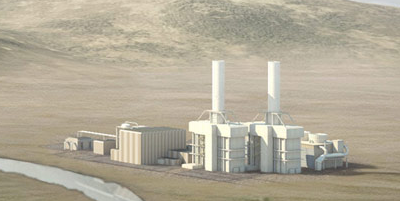Reducing start-up NOx

The Selective Catalytic Reduction (SCR) system is designed to remove nitrogen oxide (NOx) emissions from Gas Turbine exhaust and Duct Burner firing. The system employs a catalytic reaction to convert NOx into water and nitrogen through the injection of ammonia. Below are the key reactions
6 NO2 + 8 NH3 -> 7 N2 + 12 H2O
4 NO + 4 NH3 + O2 -> 4 N2 + 6 H2O
NO + NO2 + 2 NH3 -> 2 N2 + 3 H2O N
At the recent Power Gen International, Darryl Taylor, Akbar Pasha and Matt Schnitzer of Vogt Power International discussed the issue of NOx compliance of combined cycle plants at low loads.
The Selective Catalytic Reduction (SCR) system consists of the following subsystems:
Ammonia storage tank
Ammonia forwarding pumps and flow control system
Ammonia flow control balancing valves
Ammonia Injection Grid (AIG) lances
SCR Catalyst with support structure and gas sealing
Continuous Emissions Monitoring System (CEMS)
Following are emission issues during start-up
Emissions Control during start has become a requirement
SCR catalysts reaction can start at about 400 F
Workable (above 80%) NOx conversion efficiency is reached around 540 F
SCR is downstream of HP Evaporator. A pressure of about 700 psig is needed to get the Optimum temperature
Most SCR systems use Aqueous NH3 which is vaporized by Hot Gas Recirculation System. Proper Temperature may not be available at start-up
An auxiliary heater is added in NH3 system to heat the system and start the evaporation of NH3 until the exhaust temperature goes above 550F
Dynamic Simulation Analysis is needed to predict the Start-up Emissions and SCR temperatures and Efficiency during Start-up
Below are ways to reduce startup NOx
Reduction in time to achieve stack emissions compliance (minimum emissions-compliant load).
• Reduce low load operations
• Provide Stack Dampers • Heaters in HP drum to keep the HP Evaporator Temperature high during shut downs and next startup time
• Auxiliary Boiler to reduce the start-up time and keep SCR hot
• Higher Ammonia slip during start-ups
• Higher than required catalyst volume H